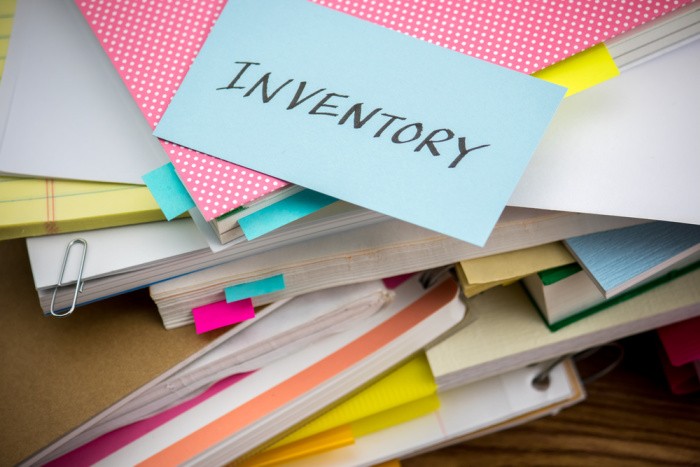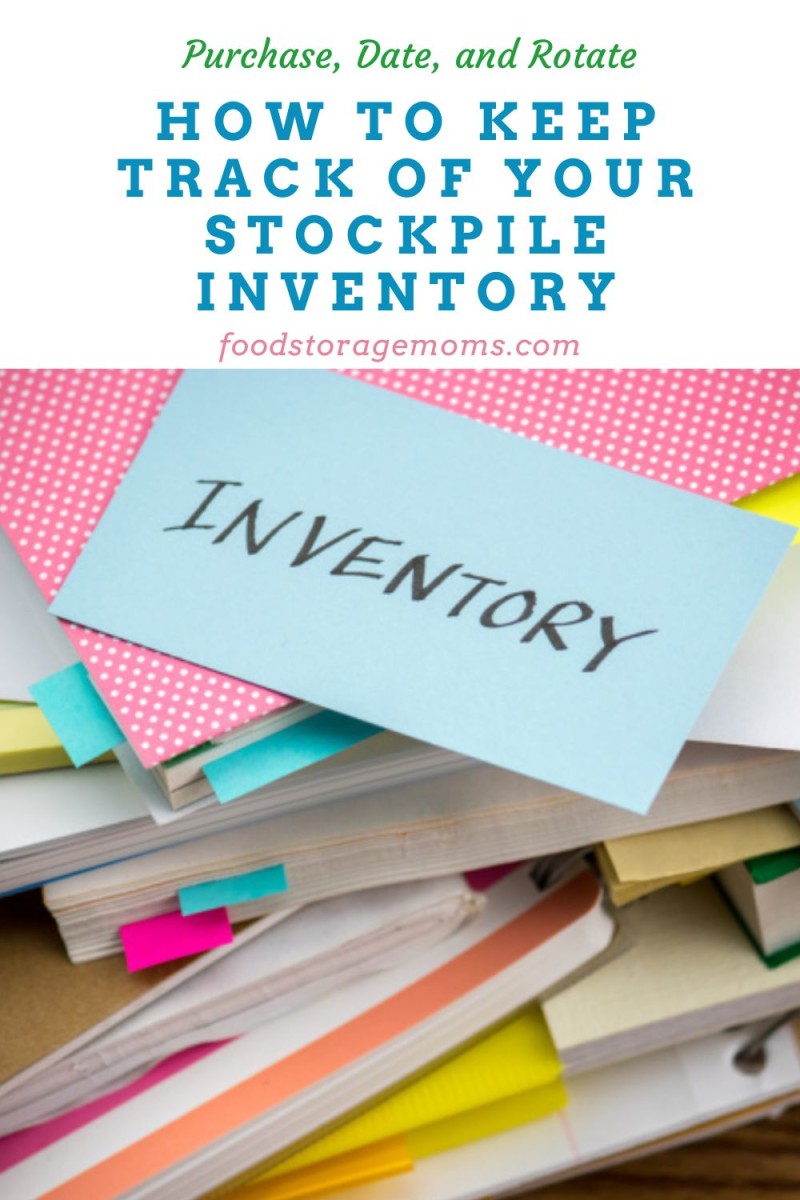
Want to learn how to keep track of your stockpile inventory? Keeping all of your ducks in a row is definitely something you want to get right the first time when it comes to emergency preparation. If you fail to do so, you may not be fortunate enough to get another chance. If you’re forced to evacuate your home at a moment’s notice, you can’t be scrambling around your home trying to figure out what you have and exactly where you’ve stored everything.
Knowing what you have on hand falls into two categories, those things like food, water, medications, and other depletable items, and the equipment and related gear you need to survive. There are things with expiration dates that need to be tracked and replaced when used. There are equally important items like cooking stoves, tools, communication devices, etc. that may need to be maintained, but don’t get used up or spoil.
So, how in the world can you prepare for a terrifying and uncomfortable situation so things go as smoothly as possible? I’d love to share a few thoughts with you that I’ve come up with. These are simple yet effective ways how to keep track of your emergency stockpile inventory!

Keep Your Emergency Supplies in a Designated Area
One of the best ways to keep track of your emergency stockpile is by keeping as much of it as you can in a single designated area. This could be a closet, shelf, or cupboard in your home, just be sure that it’s somewhere that is easy to access and that everything is kept organized. Having a designated area for all of your stockpiled items will make inventory-taking much easier when the time comes.
You also need to tell each of your family members where your emergency inventory is kept and train others on how to use each item properly in case they’re the only ones home when an emergency takes place.
But let’s take a look at a problem that some of you might run into. There may be certain items that you’re unable to keep together with all of your other emergency stockpiles. For instance, you may have an entire tree’s worth of firewood drying out in your backyard or a large quantity of propane or camping fuel in your shed that you don’t necessarily want to be stored anywhere near your home.
There may be several other survival items that you don’t want to be stored amongst your emergency supplies out in the open where everyone can see them or they’re subject to Mother Nature. Firearms and ammunition are a perfect example of this, especially if you have smaller children running around. So, how do you remember to gather everything up when it’s crunch time and you’re facing an actual emergency? This brings me to my next point.
Make an Inventory Checklist
This next tip is a great way to learn how to keep track of your stockpile inventory! Once you’ve established a designated area for all of your emergency supplies, it’s time to write down exactly what you own and where you plan on storing it. Take an inventory of everything you have, from food and water to medical supplies and batteries. That way you can easily recognize what needs to be replenished or replaced over time.
Documenting what you have on paper is also helpful should anything go missing or if you need to update someone else on the contents of your stockpile. Just remember to write next to that emergency item exactly where it’s being stored and how many of those you have, that way you won’t forget something vital for your family’s survival.
101 Homesteading Skills We Need To Teach
I need Inventory lists to be on paper, that’s how I roll. You may want to try the ones I made for you. What Do I Have?
Use Technology to Your Advantage
These days, most people have smartphones and other technological devices that can be used to make their life easier. You MAY want to use them for tracking your emergency supplies. There are a number of apps available for download that allow you to track what items you own and how much of each item you have. Some apps even let you create shopping lists so that when it’s time to restock the pantry or update your medical kits, all you have to do is open up an app on your phone and start ordering. A Prepper’s Not-To-Do List
The downside to this approach is that if you lose power and can’t effectively keep the tracking device charged. It may seem old-fashioned, but hard copy lists can really prove handy.
Be Sure to Check Your Supplies At Least Once a Year
While it’s good to have everything that you could possibly need if an emergency hits your location, that equipment wouldn’t do you a whole lot of good if some of them weren’t working properly when your life absolutely depended upon it. This is why I strongly encourage you to keep up with your emergency supplies and gear at least once a year, whether it’s replacing old batteries or replacing gear entirely that no longer works the way that it was originally intended.
Make a List of Dates of Your Food Supply
Not only should you rotate your emergency food stockpile every time you add to it, but I also encourage you to take it an extra step by writing down on a checklist the expiration date next to each item that you have stored away in your pantry. Periodically looking over this list of dates will keep you from running into any surprises of long outdated foods that you certainly won’t want to be eating after an emergency occurs. You can also use that list to your everyday benefit to plan out what foods need to be used up first and which ones you should add on next when it comes to meal preparation each day.
What are some other ways to keep track of your stockpile inventory?
- Keep track of your inventory with an inventory management app
- Get low-stock alerts on the app!
- Keep track of inventory costs and file past inventory reports
- Create an Excel spreadsheet to track your inventory visibility
- My list: What Do I Have?
More Stockpiling Tips
- 30 Survival Foods to Stockpile for Any Disaster
- Emergency Rations-What to Stockpile
- 30 Non-Food Survival Items To Stockpile
Are there shelving and storage systems that can help me keep track of my emergency supply items?
Many people like storage racks for their canned goods that help rotate the cans while also storing the. As you pull out one can the others roll forward. They are also open so you can see what is stored. It helps to have labels on the front of each type of canned goods so you know what is stored there without having to turn the can over to see the can’s label. It’s also a good idea to have on that shelf rack label how many items you want of that type so you can have an easy time taking inventory and writing down a shopping list.
There are items that aren’t designed to be stored that way, like paper towels, toilet paper, eating utensils, first aid supplies, etc. I like having these in storage bins that I can see through like a laundry basket (I wrote a post about that this week).
There are also items that store differently on shelves or in cabinets like pots and pans, Sun Ovens, water filter systems, tools, warm clothing, and other items you need in an emergency. Try different approaches that work for you. I suggest you keep like items together, and cover things with plastic bags so they’re protected from dirt and adverse weather.
How should I store my preserved food items?
Most of my food storage items, at least the long-term items, are in commercially packed #10 cans. They are freeze-dried rather than dehydrated because they last longer that way. Yes, they cost more, but the extended shelf life makes a real difference for me. These cans stack on storage shelves with wheels so I can move them to other rooms in my house if necessary.
My canned food from the garden is in larger mason jars, so they don’t work well on the types of shelves/racks I use for my small cans of food explained above. I also store them on the wheeled racks. I store the foods by type, meaning I keep the canned fruit separate from the canned veggies just I know where they are and can see what I have at a glance.
I try to keep these stored food items in a darker room that is cool most of the time.
Final Word
To put a wrap to this, proper tracking of your stockpile inventory requires you to take a few extra steps beyond just storing everything away in one spot. Establish an emergency supplies checklist, document where each item is stored, and keep track of expiration dates on edible goods so that your family is always prepared for the worst-case scenario. By taking these extra measures now, you can rest easy knowing that when it really counts, you’ve got all the bases covered. Can you think of any other clever ways to keep track of your stockpile inventory? I’d love to hear what you’ve all come up with! May God Bless this world, Linda
Copyright Images: Inventory Depositphotos_127514548_S
The post How to Keep Track of Your Stockpile Inventory appeared first on Food Storage Moms.
